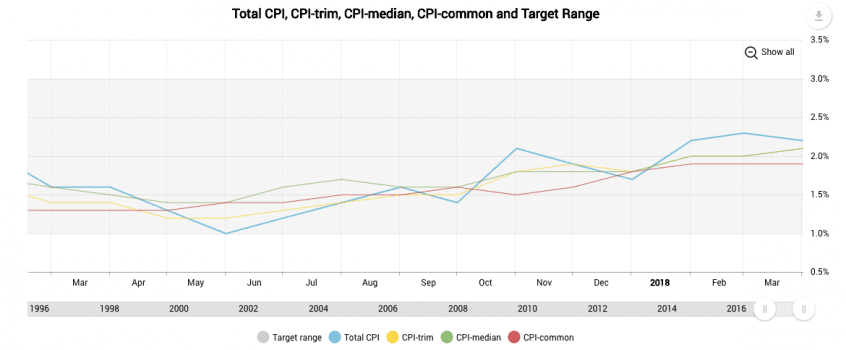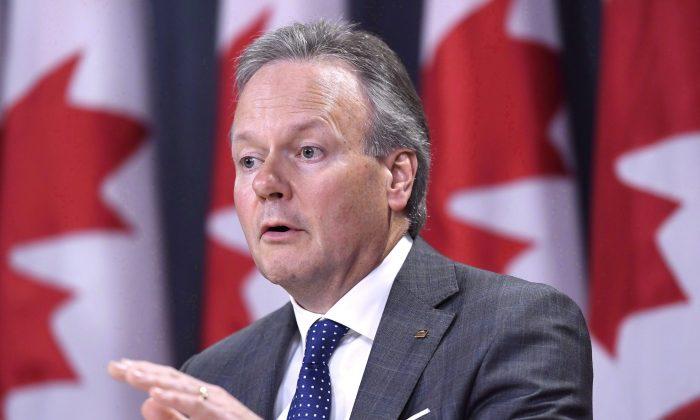The bank reiterated its mantra: “Higher interest rates will be warranted to keep inflation near target.” Regarding future rate hikes, the BoC dropped “will remain cautious” from April’s statement in favour of emphasizing “a gradual approach” to be taken, guided by incoming data.
“I think we can fairly safely predict that there will be a rate hike next time in July,” said Steve Ambler, the David Dodge chair in monetary policy at the C.D. Howe Institute, in a phone interview.
As for the interpretation of “gradual,” Ambler said it means the BoC is on a path of moving toward the neutral rate, which it estimated to be between 2.5 and 3.5 percent, by hiking three to four times a year at most (0.75 to 1 percent per year).
“To me the gradual approach makes sense. I don’t really see any great danger that inflation is just going to take off all of a sudden,” said Ambler.
Andrew Kelvin, senior Canada rates strategist at TD Securities said he didn’t think markets expected the bank to be so direct in its messaging.
“This feels an awful lot like spoon-feeding the market,” he said in a phone interview. He added that markets were pricing in an 85 percent chance of a July rate hike, up from two-thirds the day before.
“After reading that statement, you have to argue that there’s a fairly low bar to a hike in July,” Kelvin said.
The Canadian dollar moved from below US$0.77 before the announcement to above US$0.776 after it.
Controlling Inflation
As always the bank weighs the pros and cons to the inflation outlook. Economic data has recently been better than expected, but the risks of trade policy uncertainty, which hurts business investment, and highly indebted households suggest caution in raising rates.Higher oil prices and minimum wages are the main factors for the rise in inflation and the BoC expects it to be a bit higher than what was forecast in April. As it focuses on the underlying inflation trend, it said it considers the rise in gas prices as temporary.
Headline inflation at 2.2 percent is at its highest since October 2014 when it hit 2.4 percent. Core inflation is at the 2 percent target, reflecting an economy operating at close to its potential.

Bank forecasts from April show inflation rising above 2 percent before falling back to target in 2019. However, it appears the BoC will not let inflation hover for long above 2 percent as it tries to engineer a more normal level for rates.
With inflation-linked bonds trading below levels from 2014, the market isn’t worried about an overshoot of the 2 percent target, said Kelvin.
In April, the BoC raised its estimate of the economy’s potential growth rate to 1.8 percent. The persistent undershooting of the inflation target was mostly attributed to underestimating the economy’s potential and therefore underestimating the slack in the economy.
Housing
Canadian households have just over $2 trillion of debt, including $1.5 trillion of mortgage debt. The Bank of Canada is carefully monitoring this vulnerability as rates rise and debt-service costs increase.The bank’s concern with raising interest rates is that a rate hike can take up to two years to fully work itself through the economy. Thus, the three rate hikes since last July have not had their full effect yet.
Despite the impact of stricter mortgage rules, the BoC expects housing activity to pick up and that “consumption will continue to contribute importantly to growth in 2018.” This would be welcomed news for the housing market which saw existing home sales fall 13.9 percent in April.
No changes in interest rates were expected on May 30, but now, many expect the bank to raise rates to 1.5 percent in July.





